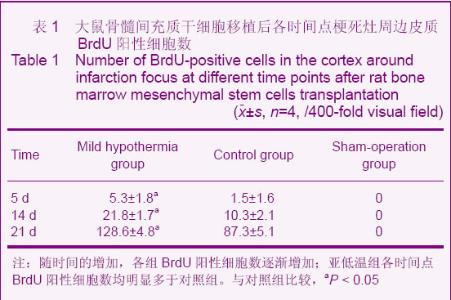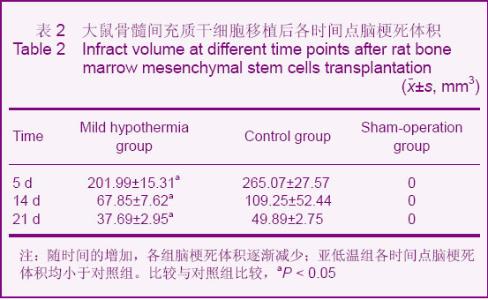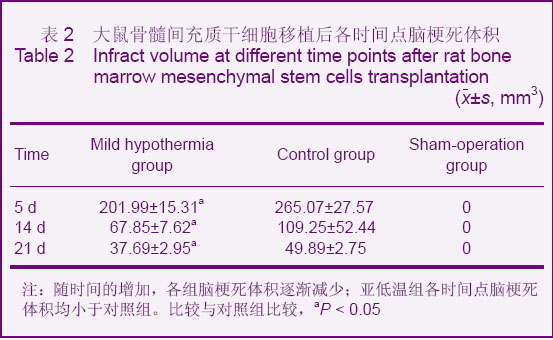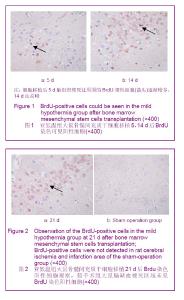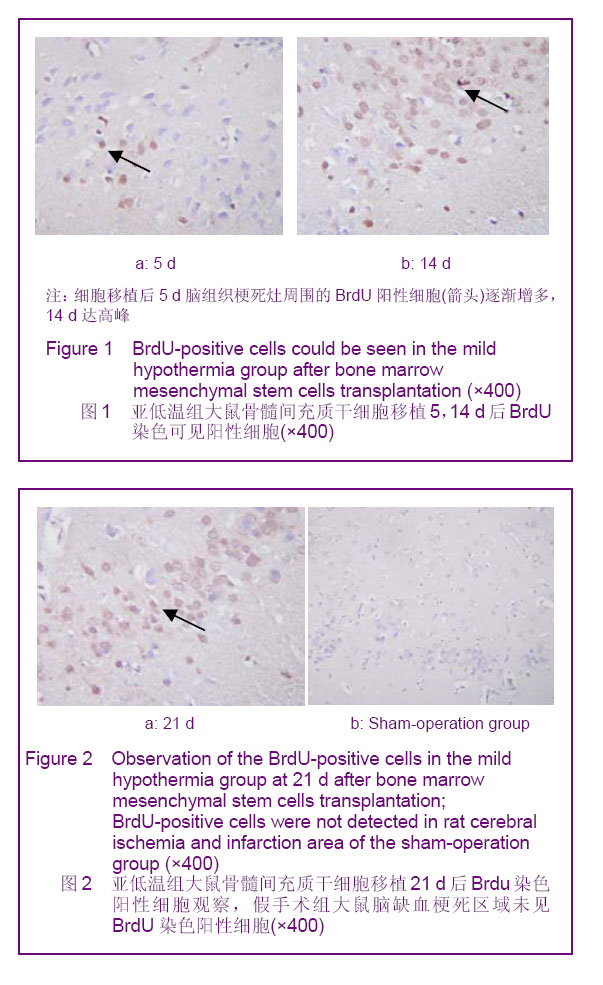| [1] 中华医学会神经病学分会脑血管病学组缺血性脑卒中二级预防指南撰写组.中国缺血性脑卒中和短暂性脑缺血发作二级预防指南2010.中华神经科杂志,2010,43(2):154-160.[2] 中华医学会神经病学分会脑血管病学组急性缺血性脑卒中诊治指南撰写组.中国急性缺血性脑卒中诊治指南2010[J].中华神经科杂志,2010,43(2):146-153.[3] Hayase M, Kitada M, Wakao S, et al. Committed neural progenitor cells derived from genetically modified bone marrow stromal cells ameliorate deficits in a rat model of stroke. J Cereb Blood Flow.Metab. 2009;29(5):1409-1420.[4] Novikova LN, Brohlin M, Kingham PJ. Neuroprotective and growth-promoting effects of bone marrow stromal cells after cervical spinal cord injury in adult rats. Cytotherapy. 2011; 13(7):873-887. [5] Naghdi M, Tiraihi T, Namin SA,et al.Transdifferentiation of bone marrow stromal cells into cholinergic neuronal phenotype: a potential source for cell therapy in spinal cord injury. Cytotherapy. 2009;11(2):137-152.[6] Peng Y, Zhang QM, You H, et al. Growth-associated protein 43 and neural cell adhesion molecule expression follow-ing bone marrow-derived mesenchymal stem cell transplantation in a rat model of ischemic brain injury. Neural Regen Res. 2010;5(13):975-980.[7] Yoshihara T, Ohta M, Itokazu Y,et al. Neuroprotective effect of bone marrow-derived mononuclear cells promoting functional recovery from spinal cord injury. J Neurotrauma. 2007;24(6): 1026-1036.[8] Zhang C, Li Y, Chen J,et al. Bone marrow stromal cells upregulate expression of bone morphogenetic proteins 2 and 4, gap junction protein connexin-43 and synaptophysin after stroke in rats. Neuroscience. 2006;141(2):687-695.[9] Xu YX, Chen L, Hou WK, et al. Mesenchymal stem cells treated with rat pancreatic extract secrete cytokines that improve the glycometabolism of diabetic rats. Transplant Proc. 2009;41(5):1878-1884.[10] Sadan O, Shemesh N, Cohen Y, et al. Adult neurotrophic factor-secreting stem cells: a potential novel therapy for neurodegenerative diseases. Isr Med Assoc J. 2009;11(4): 201-204.[11] Pabello NG, Tracy SJ, Keller RW Jr. Protective effects of brief intra- and delayed postischemic hypothermia in a transient focal ischemia model in the neonatal rat. Brain Res. 2004; 995(1):29-38.[12] Chen JJ, Ren PP. Shiyan Dongwu Kexue. 2011;28(3):78-79.程津津,任萍萍. 学习《关于善待实验动物的指导性意见》后的体会[J].实验动物科学,2011,28(3):78-79.[13] Zhang QM, Peng Y, Zhuang WH, et al. Zhongguo Zuzhi Gongcheng Yanjiu yu Linchuang Kangfu. 2010;36(8):6738- 6743. 张其梅,彭玉,庄伟华,等.骨髓间充质干细胞移植对永久性大脑中动脉阻塞大鼠生长相关蛋白43及脑梗死体积的影响[J].中国组织工程研究与临床康复,2010,36(8):6738-6743.[14] Marshall CT, Lu C, Winstead W,et al. The therapeutic potential of human olfactory-derived stem cells. Histol Histopathol. 2006;21(6):633-643.[15] Lima C, Pratas-Vital J, Escada P,et al. Olfactory mucosa autografts in human spinal cord injury: a pilot clinical study. J Spinal Cord Med. 2006;29(3):191-203[16] Longa EZ, Weinstein PR, Carlson S,et al. Reversible middle cerebral artery occlusion without craniectomy in rats. Stroke. 1989;20(1):84-91.[17] Paxions G,Watson C.The rat brain in stereotaxic coordinates. New York: Academic Press. 1998.[18] van Velthoven CT, Kavelaars A, van Bel F, et al. Mesenchymal stem cell treatment after neonatal hypoxic-ischemic brain injury mproves behavioral outcome and induces neuronal oligodendrocyte regeneration. Brain Behav Immun. 2010;24(3):387-393.[19] Lee JA, Kim BI,Jo CH, et al. Mesenchymal stem-cell transplantation for hypoxic-ischemic brain injury in neonatal rat model. Pediatr Res. 2010;67(1):42-46.[20] van Velthoven CT, Kavelaars A, van Bel F,et al.Mesenchymal stem cell transplantation changes the gene expression profile of the neonatal ischemic brain.Brain Behav Immun. 2011; 25(7):1342-1348. [21] Guo W, Zhang L, Christopher DM, et al. RNA-binding protein FXR2 regulates adult hippocampal neurogenesis by reducing Noggin expression. Neuron. 2011;70(5):924-938.[22] Marr RA, Thomas RM, Peterson DA, et al. Insights into neurogenesis and aging: potential therapy for degenerative disease? Future Neurol. 2010;5(4):527-541.[23] Lo EH, Dalkara T, Moskowitz MA. Mechanisms, challenges and opportunities in stroke. Nat Rev Neurosci. 2003;4(5): 399-415.[24] Zhang H, Xu G, Zhang J, et al.Mild hypothermia reduces ischemic neuron death via altering the expression of p53 and bcl-2. Neurol Res. 2010;32(4):384-389. |
